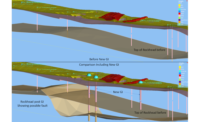On-Demand Supercomputers Democratize Airflow Modeling

Models of airflow in operating rooms help engineers improve HVAC designs to quickly remove air—and infectious agents with it. Plant-growing spaces also benefit from clean airflow.
IMAGE COURTESY ENVENIO

Online modeler lets engineers power up computing horsepower as required.
IMAGE COURTESY ENVENIO


Studies by the Centers for Disease Control and Prevention show that 5% to 10% of patients in acute care facilities contract infections there—a figure that’s been on the rise for the last 30 years.
To combat airborne infections, an HVAC engineering company now is working with a tech company to offer remote computing power to run computational fluid dynamics models. The system aims to reduce the chance that patients will contract what are known as hospital-acquired infections by making it easier for designers to ensure critical care facilities are safer places to be.
By minutely modeling airflow, HVAC engineers can guide contaminated air away from patients and out of the room. They also can help eliminate areas of stagnant air—which can harbor infectious agents—in any section of the room.
But any good CFD software running on a very powerful computer can perform such operations. What makes this one different is its easy accessibility for users.
“We have a cloud-based fluid dynamics platform that is available on demand—pay as you go. It uses graphics cards to reduce simulation time and cut the cost by up to 80%,” says Scott Walton, vice president of Envenio, which offers a flexible CFD solver called EXN/Aero.
It was the flexibility of EXN/Aero that caught the attention of Pierre Bombardier, a software engineer at engineering consultant Faure QEI, Meylan, France, who recently used it to cleanse an operating room’s airflow.
“What’s really new is to be able to choose the right computing power according to whether the model is big and the project is urgent or not. That is hugely appealing for our business, day to day, because we don’t know what and when the next job will be,” says Bombardier.
Envenio’s services let users harness the power of a few or many NVIDIA graphics cards in the cloud—effectively turning a laptop or even a Chromebook into a supercomputer. If a project is urgent, multiple CFD models can be run at once.
“Presently we have options for either a dual K40 GPU option, which will handle approximately 25 million cells, at $13.50 USD per hour, or a 4 GPU K80 system that will handle approximately 50 million cells, at $14.85 per hour,” says Scott Treat, Envenio’s sales engineer. “We will soon be rolling out additional tiers, with eight options handling up to approximately 200 million cells.”
Treat references a high-end NVIDIA graphics card, the Tesla K40, with a clock speed of up to 875 GHz (when boosted) per card. The millions of cells he mentions are like the squares on graphing paper, only cubes in 3D and used to measure room volume. For CFD modeling purposes, the room is divided into these cells. The cell size determines the granularity of the CFD model and thus the computing power required.
If a user makes the cells large enough, he or she can run many models at the same time, and for the same price as running a single, more detailed model. Super granular modeling usually isn’t necessary to track the flow of air, says Treat. “You could simulate the flow of air around the handle of a desk drawer very accurately,” says Treat. “You would typically not want to do that. It doesn’t contain a whole bunch of data you need.”
Previously, Bombardier used a different thermo-fluid software that he says cost him about $10,000 a year. EXN/Aero costs $250 a month plus $15 an hour for a basic package, says Walton.








